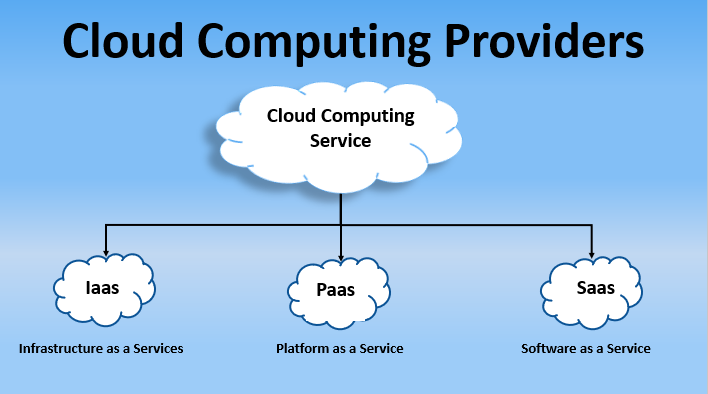Simplify Your Infrastructure With Cloud Solutions
As companies browse the ever-evolving landscape of innovation and information management, the function of cloud solutions in simplifying framework has ended up being increasingly popular. Just how can businesses successfully browse this transition and genuinely open the capacity of cloud solutions for simplifying their facilities?
Advantages of Cloud Provider
Cloud services offer a structured strategy to handling IT facilities, offering companies with flexibility, scalability, and cost-efficiency. One of the vital benefits of cloud services is the scalability they supply.
Furthermore, cloud services eliminate the demand for services to buy pricey software and hardware. This cost-efficiency is a significant benefit, particularly for small to medium-sized ventures seeking to reduce upfront prices. By utilizing cloud services, businesses can access high-quality IT sources without the significant price connected with standard facilities setups.
Moreover, cloud solutions give organizations with the adaptability to access their information and applications from anywhere with a net connection. This level of accessibility enhances partnership amongst groups, allows remote job, and raises overall efficiency. The versatility supplied by cloud solutions empowers companies to adjust promptly to changing market conditions and customer demands.
Expense Financial Savings and Scalability
In enhancement to the operational benefits highlighted earlier, the integration of cloud services into a business's facilities yields significant price savings and enhanced scalability. Cloud services provide a pay-as-you-go design, enabling services to range sources up or down based on present requirements, consequently staying clear of the prices linked with maintaining excess ability. This flexibility enables companies to adapt quickly to fluctuating needs without sustaining unneeded costs.
In addition, cloud services remove the need for upfront investments in software and hardware, reducing capital investment. General expenses are likewise minimized as companies no more need to take care of and keep physical web servers, causing lower energy intake and IT staffing prices. Furthermore, cloud services provide automated updates and maintenance, guaranteeing that the infrastructure continues to be current and protected without calling for hands-on treatments.
Improved Safety And Security Actions
Applying stringent security actions is extremely important when incorporating cloud solutions right into a business's facilities to secure sensitive data and guarantee conformity with market policies. Cloud service companies supply enhanced safety and security attributes such as information file encryption, firewall software security, and multi-factor authentication to minimize cybersecurity threats.
Moreover, regular security audits and conformity evaluations help identify susceptabilities and make sure adherence to industry criteria. Business can also profit from functions like automatic security updates and real-time danger tracking given by cloud provider. By focusing on safety and security actions and remaining proactive in attending to potential threats, companies can with confidence leverage cloud solutions while protecting their beneficial data from unapproved accessibility or breaches.
Transitioning to Cloud Framework
To effectively incorporate cloud services right into a company's facilities, an organized method that resolves the shift towards cloud-based remedies is critical. Transitioning to shadow infrastructure includes mindful planning and implementation to make certain a smooth migration process. The initial step is to evaluate the existing infrastructure and determine which systems and applications appropriate for migration to the cloud. This analysis needs to consider elements such as information level of sensitivity, conformity requirements, and performance needs.
Once the assessment is complete, a migration strategy ought to be established. This technique must detail the timeline, sources, and obligations for relocating each component to the cloud. It is important to interact this plan clearly to all stakeholders to ensure placement and decrease disruptions throughout the change.
Throughout the migration process, tracking and testing are essential to determine and attend to any issues without delay. Routine checkpoints ought to be developed to track development and make required changes. Furthermore, training for employees on using cloud solutions ought to be provided to make certain an effective transition and optimize the benefits of the brand-new facilities.
Best Practices for Cloud Fostering
Successful fostering of cloud services rests on the tactical placement of company objectives with technological capabilities and business readiness. To make certain a smooth shift to the cloud, organizations need to begin by conducting a thorough evaluation of their present infrastructure and identifying which workloads are best suited for cloud movement. It is crucial to entail crucial stakeholders from different departments in the decision-making procedure to acquire buy-in and attend to any type of worries early.
Another finest practice for cloud fostering is to focus on protection and conformity. Organizations has to meticulously assess the security actions provided by cloud provider and guarantee that their data is discover this secured according to industry criteria and governing requirements. Executing durable data security, accessibility controls, and normal safety and security audits can try this assist alleviate threats related to cloud adoption.

Final Thought

As companies browse the ever-evolving landscape of innovation and information management, the function of cloud solutions in simplifying facilities has actually become progressively prominent - linkdaddy cloud services. Exactly how can organizations effectively navigate this change browse around this site and truly unlock the capacity of cloud solutions for streamlining their infrastructure?
Cloud services use a structured approach to managing IT facilities, supplying organizations with versatility, cost-efficiency, and scalability. By making use of cloud solutions, businesses can access top notch IT sources without the hefty price tag associated with conventional facilities arrangements.
To make certain a smooth transition to the cloud, organizations should start by performing a comprehensive analysis of their existing framework and recognizing which work are best suited for cloud movement.